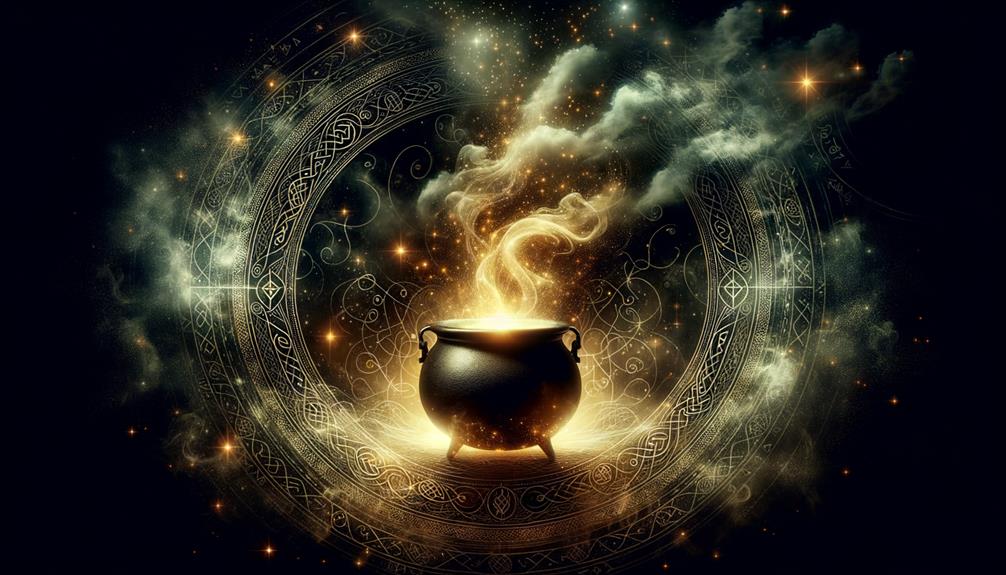The Cauldron of Rebirth, or Dagda's Cauldron as some call it, is a legendary treasure deeply rooted in Celtic mythology. It's one of the four famed Treasures of the Tuatha Dé Danann. This artifact, tied to the god Dagda, plays a pivotal part in the Second Battle of Mag Tuired. The cauldron stands as a powerful symbol of rebirth, transformation, and the unending cycle of life and death. Its symbolic impact has stood firm through the ages, inspiring modern works of literature, art, and media with its themes of renewal and interconnectedness. As I've delved deeper into the story surrounding this artifact, I've found an abundance of fascinating details that the narrative gradually uncovers.
Origins of the Rebirth Cauldron
Let's chat about the intriguing beginnings of the Rebirth Cauldron. This legendary artifact is deeply intertwined with the god Dagda from Celtic mythology. You might hear it referred to as The Cauldron of Plenty or The Cauldron of Dagda – cool, right?
The story gets even better. This famed cauldron was a key player in the Second Battle of Mag Tuired. Picture this: it was nabbed by the Fomorians, but Dagda wasn't having any of it. He managed to snatch it back.
In the rich tapestry of Celtic lore, the Rebirth Cauldron is one of the four Treasures of the Tuatha Dé Danann. This connection lends the cauldron a certain mystique and cultural weight, making it a potent symbol of renewal and abundance in Celtic mythology.
When we understand where the Rebirth Cauldron comes from, we can fully appreciate its role in Celtic stories and traditions. It's not just about the artifact itself, but what it represents in the broader context of Celtic culture.
Legends Surrounding the Cauldron
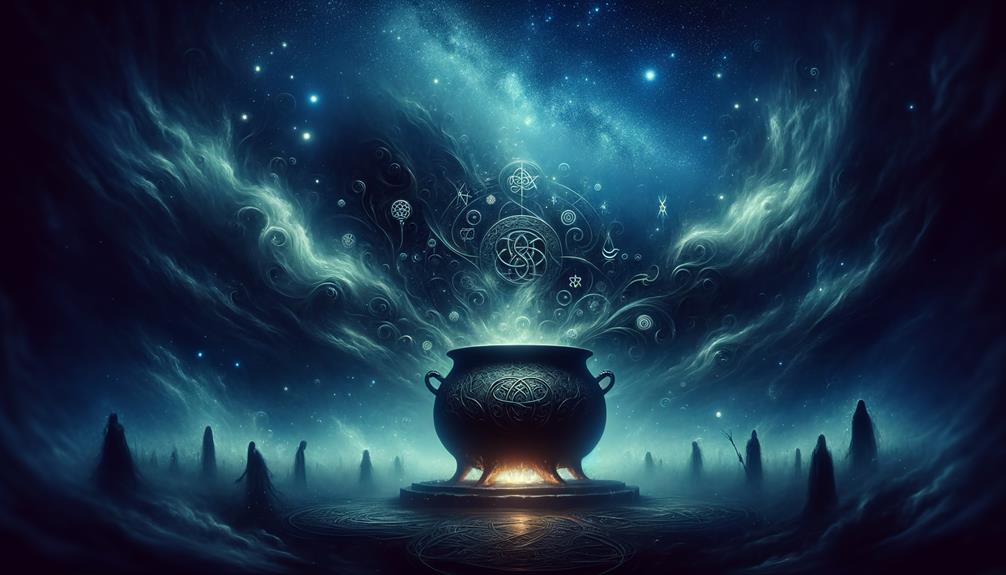
So, we've touched on the origins of the Rebirth Cauldron, but what about the tales and myths that have sprung up around it? This ancient artifact is deeply intertwined with the god Dagda and plays a crucial role in the story of the Second Battle of Mag Tuired. According to the legend, the cauldron was stolen by the Fomorians, a legendary group of supernatural beings, but Dagda was able to recover it.
Let's take a look at some of the legends and the roles that the cauldron played in them:
| Myth | Role | Outcome |
|---|---|---|
| Second Battle of Mag Tuired | The main artifact | Dagda recovers it |
| Connection with Dagda | A symbol of influence | Further strengthened Dagda's authority |
| Stolen by the Fomorians | A symbol of desire | Escalated tension |
The Rebirth Cauldron is one of the four Treasures of the Tuatha Dé Danann. It symbolizes rebirth, transformation, and unending cycles, which solidifies its place in Celtic mythology.
Symbolism in Celtic Mythology
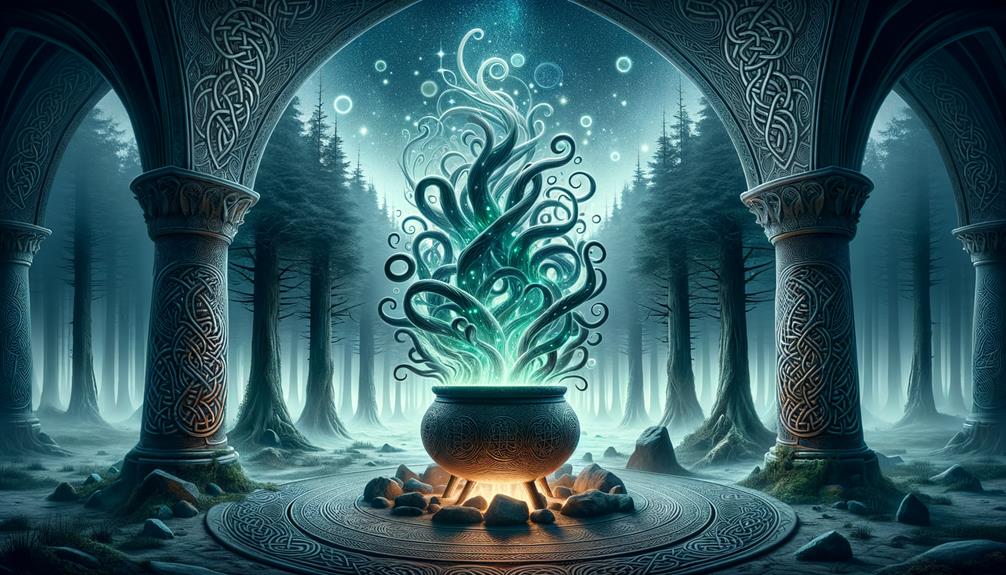
Celtic mythology is like a rich, woven artwork, and nestled in its threads is the Cauldron of Rebirth. This isn't just any old pot, though. It's a powerful symbol that captures the essence of change, rebirth, and the inevitable dance of life and death.
- You know the god Dagda? Well, in his tales, the cauldron is a beacon of healing and a fresh start. It's like a magical health spa in a pot!
- The cauldron pops up in many a Celtic tale, often symbolizing life's richness and energy. Imagine it as a pot of bubbling stew, brimming with goodness.
- Remember the Second Battle of Mag Tuired? The cauldron took center stage there, reinforcing its whole rebirth and regeneration theme.
- As one of the four Treasures of the Tuatha Dé Danann, the cauldron really drives home the idea of transformation and renewal in the Celtic belief system.
Cauldrons Influence on Literature
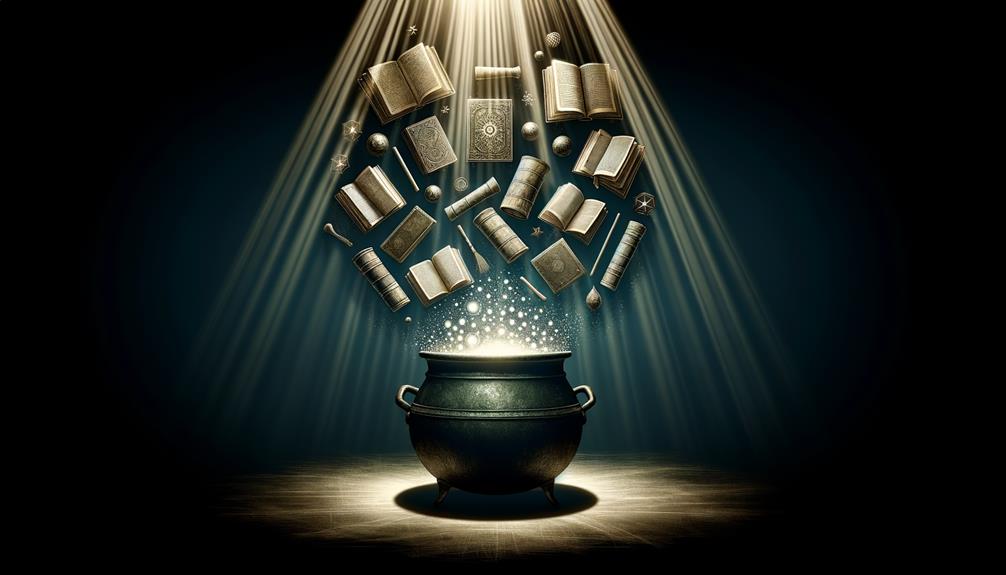
The Cauldron of Rebirth has been a game-changer in the world of literature. Why? Well, it's all about its powerful themes of change and renewal. It pops up again and again in stories, symbolizing the circle of life and death and emphasizing the awesome power of new beginnings.
Some writers weave in its magical healing and youth-restoring capabilities, adding a touch of the supernatural to their tales. But the cauldron's influence doesn't stop there. It also represents plenty, health, and life force, mirroring its importance in mythology.
Through different interpretations in literature, the Cauldron of Rebirth keeps sparking creativity in storytelling, allowing writers to dive deep into the big ideas of regeneration and interconnectedness. So yeah, it's safe to say its mark on literature is pretty clear, showing just how timeless myth and symbolism really are.
Modern Interpretations and Uses
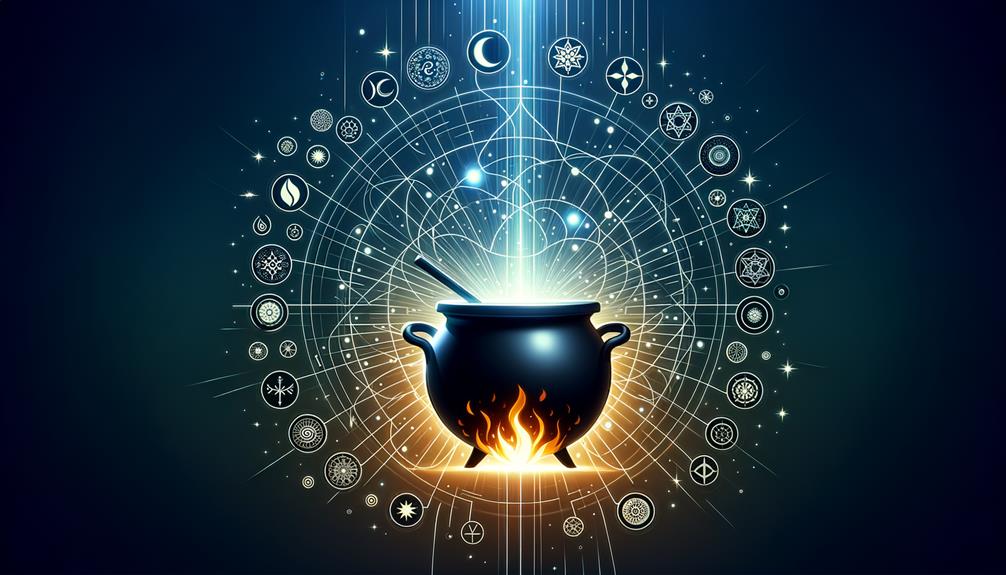
The Cauldron of Rebirth has captivated the minds of artists, authors, and spiritual enthusiasts today, serving as a wellspring of inspiration. Its symbolic depth and complexity offer fertile ground to explore concepts of revival, transformation, and life's cyclic pattern. Let's take a look at how it resonates in our current times:
- Literature: Many writers integrate the imagery of the cauldron into their stories to delve into deep themes of revival and change.
- Art: Today's artists use the cauldron as a symbol to convey ideas of transformation and rebirth.
- Spiritual Practices: Those seeking spiritual enlightenment often see the cauldron as a metaphor for personal development and the interconnectedness of all things.
- Popular Culture: The cauldron's mythical appeal adds a layer of depth to movies, video games, and other media, drawing in audiences.
The multiple ways the cauldron is used today reaffirms its eternal relevance. Its message of cyclical rebirth continues to strike a chord with our shared human experience.
Frequently Asked Questions
What Is the Myth of the Cauldron?
The myth of the cauldron, at its core, tells a story of rebirth. It revolves around a mystical pot that possesses the extraordinary ability to resurrect the dead. This serves as a metaphor for rejuvenation and the endless cycle of life.
What Is the Myth of Ceridwen's Cauldron?
Let's chat about an intriguing story from Welsh mythology, all about Ceridwen's cauldron. This was no ordinary cauldron, mind you. Ceridwen used it to cook up a special potion, intended to grant wisdom. Now, she had planned this as a gift for her son, but things didn't exactly go as planned. A guy named Gwion Bach happened to take a sip, and let me tell you, it had quite the effect. He didn't just gain wisdom; he transformed and was reborn as Taliesin, a renowned bard. Quite the tale, isn't it?
What Is the Legend of Cerridwen?
In Welsh lore, Cerridwen is a famous witch. Her reputation for transformation and wisdom is legendary, represented by a powerful brew she created for her son. However, Gwion accidentally drank it, which resulted in his rebirth as Taliesin.
Who Is the Celtic Goddess of Rebirth?
Did you know that the Celtic goddess of rebirth is named Cerridwen? People admire her because she represents the cycles of life that keep going around and around. It's sort of like the changing of the seasons or the way a caterpillar becomes a butterfly. Her reach is all-encompassing, touching everything in nature and showing how everything in life is connected. And here's something really cool – she's the one guiding souls through the process of reincarnation and renewal.

